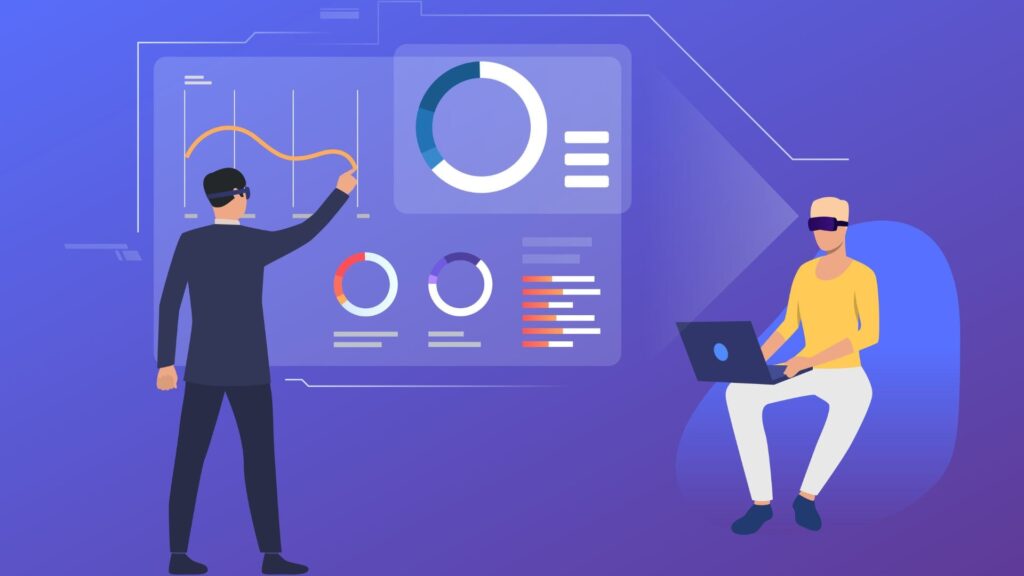Engaging your audience is challenging, and consumer demands make it even more pressing to stay on top of customer experiences. Traditional static content often falls short of capturing user attention and driving meaningful interactions. Dynamic content personalization offers tailored experiences that resonate with individual users. Notably, 74% of consumers feel frustrated when website content isn’t personalized, highlighting the imperative need for customized user experiences.
Dynamic content personalization leverages real-time customer data and user behavior insights to deliver content that aligns with individual preferences and needs. By analyzing factors such as browsing history, demographic data, and past interactions, businesses can create personalized content that captures attention and fosters deeper engagement. Organizations that adopt a strategic approach enhance user satisfaction while achieving higher conversion rates and customer loyalty.
Why Dynamic Content Personalization is the Key to Engagement
Dynamic content personalization is the process of tailoring website content, marketing messages, and digital experiences based on user behavior, customer data, and real-time interactions. Unlike static content, which delivers the same message to every visitor, dynamic personalization adapts to each individual user, ensuring that the content they see aligns with their interests, preferences, and past interactions.

Capturing and maintaining user engagement demands relevance. Consumers expect personalized experiences that resonate with them. Dynamic content personalization ensures that every interaction feels intentional, making users more likely to engage, convert, and stay loyal.
The Limitations of Static Content
Unlike static content, dynamic content adapts based on audience behavior, preferences, and real-time interactions. Traditional marketing strategies that rely on generic messaging struggle to capture user engagement, leading to lower conversions and customer retention. With website analytics revealing that personalized user experiences drive higher interaction rates, businesses must rethink their digital marketing strategy to stay competitive.
How Personalized Experiences Improve Engagement and Conversions
Consumers expect brands to understand their needs. Personalized content increases relevance, encouraging users to spend more time interacting with website content, marketing messages, and product pages.
Research shows that brands leveraging content personalization see measurable improvements in engagement metrics, including click-through rates and time on site. Businesses that practice hyper-personalization report up to 30% improvement in return on investment (ROI) for marketing efforts.

By integrating user data into a dynamic content strategy, businesses can create meaningful interactions that guide users through the customer journey, ultimately leading to higher customer lifetime value.
The Role of AI and Automation in Scaling Personalization
Delivering tailored content at scale requires more than just manual adjustments. AI-driven personalization strategies leverage machine learning algorithms to analyze real-time behavioral data, identifying patterns in user interactions and data points across site visitors. With automation, marketers can deploy customized content efficiently, ensuring that each customer receives the right message at the right time.
By integrating customer data platforms with marketing automation, businesses can optimize their digital marketing efforts without sacrificing efficiency.
Using Customer Data to Drive Personalized Content
The key to effective content personalization lies in understanding your audience at a deeper level. Instead of guessing what might resonate, businesses can leverage data to create tailored content that aligns with real user interests. By tapping into demographic data, browsing history, and real-time behavioral data, brands can move beyond one-size-fits-all messaging and deliver truly personalized user experiences that drive engagement and conversions.
Understanding Audience Preferences Through First-Party Data
The foundation of content personalization lies in customer data—but not all data carries the same weight. First-party data, collected directly from user interactions on a brand’s website, mobile apps, and marketing campaigns, provides the most reliable insights.
Unlike third-party data, which is increasingly restricted due to privacy regulations, first-party data allows businesses to create personalized experiences while still protecting user data. By analyzing user visits, browsing patterns, and purchase history, brands can effectively segment users and deliver content that resonates.
How AI Analyzes Customer Data for Real-Time Personalization
With vast amounts of user data available, AI-powered tools help businesses turn raw information into actionable insights. Machine learning algorithms can identify patterns in demographic data, past purchases, and search queries. Brands use this data to create tailored content that matches individual users’ interests.
By integrating customer data platforms with website analytics, businesses can track engagement in real time and refine their personalization strategies based on key metrics like time on page, conversion rates, and repeat visits.
Examples of Brands Leveraging Customer Data Effectively
Industry leaders are already using data analysis to drive personalized user experiences. Streaming services recommend content based on viewing history, ecommerce sites tailor product recommendations based on purchase history, and search ads adjust dynamically to match search queries.
For instance, Spotify’s “Wrapped” campaign provides users with a personalized year-in-review, showcasing their top songs, artists, and genres. When brands create personalized content, they can enhance user engagement while encouraging social sharing, amplifying the campaign’s reach.
By applying these same principles, businesses in any industry can use personalization capabilities to enhance their digital marketing efforts, creating a more engaging and effective customer journey.
Adapting Content to User Behavior for Maximum Impact
Every action a user takes—whether it’s clicking a product page, abandoning a cart, or engaging with specific website content—reveals valuable insights. By analyzing visitor behavior in real time, businesses can dynamically adjust their messaging to match intent and expectations. Every interaction feels relevant, increasing user engagement and driving higher conversions.
The Importance of Behavioral Insights in Content Personalization
Every user interaction provides valuable insights that can inform a more effective digital marketing strategy. By monitoring real-time behavioral data, businesses can determine what types of online content drive engagement and which messages resonate with different audience segments. Static content remains unchanged regardless of who views it, but dynamic content adjusts to reflect user preferences, improving both relevance and customer retention.

How AI-Powered Platforms Detect and Respond to Consumer Behavior
Advancements in AI and website personalization allow brands to react instantly to audience behavior. If a visitor spends time on a specific product page but doesn’t make a purchase, AI can trigger dynamic pop-ups with a discount or personalized recommendation.
Marketing automation platforms also help deliver customized content through email marketing campaigns, adjusting personalized subject lines and offers based on past interactions. By continuously learning from user visits, brands can enhance customer loyalty and increase customer lifetime value.
Strategies for Implementing Real-Time Content Adjustments
To make the most of dynamic content personalization, businesses should:
- Use Google Analytics and other analytics tools to monitor engagement metrics and track behavioral patterns.
- Implement marketing automation to trigger personalized responses based on site search activity, abandoned carts, or time spent on specific pages.
- Test and refine marketing messages by leveraging A/B testing to see which content variations drive the best results.
- Ensure that users based in different regions, industries, or demographics receive tailored content that aligns with their expectations.
By leveraging real-time insights and automation, businesses can fine-tune their personalization strategies to ensure every interaction feels relevant and timely. Implementing these best practices will help create a more seamless and engaging experience, driving stronger connections and long-term customer loyalty.
Automating Content Delivery at Scale
Personalization is powerful, but without automation, it can become overwhelming to manage. AI-driven marketing automation helps businesses efficiently deliver customized content. By integrating automation into their digital marketing efforts, brands can consistently scale personalized experiences.
Why Automation is Essential for Delivering the Right Content at the Right Time
The demand for personalized user experiences continues to grow, but manually delivering customized messaging to every individual user is impossible. Marketing automation solves this challenge by ensuring the right content reaches the right audience at the right time.
With AI-driven workflows, businesses can deploy customized content across multiple channels—including email, social media, and landing pages—without requiring constant manual input. Automation enhances efficiency while maintaining a high level of user satisfaction.
The Role of DAM in Organizing and Distributing Personalized Content
A robust customer data platform isn’t the only tool needed to execute an effective dynamic content strategy. A Digital Asset Management (DAM) system streamlines the organization and retrieval of customized content, ensuring marketing teams can quickly access and deploy the right assets for every campaign. By integrating DAM with marketing automation, businesses can automate the distribution of promotional content, eliminating bottlenecks and accelerating content delivery across all touchpoints.
Best Practices for Integrating Automation into Your Content Workflow
Creating personalized user experiences is only effective if businesses can maintain consistency and efficiency as they scale. To maximize the impact of content personalization at scale:
- Leverage AI-driven recommendations to automatically generate and distribute personalized content based on real-time behavioral data.
- Connect customer data platforms with marketing automation tools to create seamless workflows for personalized marketing campaigns.
- Use data collection techniques like lead forms and site search tracking to continuously refine audience segments and improve website personalization.
- Implement automated Google Ads and search ads campaigns that adapt messaging in real time based on search queries and past interactions.
By integrating automation into their content personalization strategy, businesses can streamline workflows, enhance efficiency, and deliver customized content at scale. These best practices ensure that every marketing message aligns with audience preferences, maximizing engagement and conversion opportunities.
Measuring the Success of Your Personalization Strategy
Even the most advanced personalization strategies need ongoing evaluation to ensure they’re driving results. Tracking key metrics like engagement, conversions, and customer retention helps businesses refine their approach and optimize content over time. Brands that leverage analytics can continuously improve user experiences and maximize the impact of their strategy.

Key Engagement Metrics to Track
Implementing effective content personalization is one thing, but success comes from continuous improvement. Businesses must measure engagement metrics to determine whether their content strategy is driving results.
Key indicators include click-through rates, conversion rates, customer retention, and time spent on website content. By leveraging analytics tools, businesses can track how customers interact with personalized content and identify areas for optimization.
A/B Testing and Optimization for Continuous Improvement
One of the most effective ways to refine website personalization is through A/B testing. By comparing different variations of landing pages, marketing messages, and tailored content, businesses can determine which approaches resonate most with their audience segments. Brands can fine-tune their personalization strategies with an iterative approach, ensuring that every interaction aligns with target audiences and business objectives.
How to Refine Personalization Efforts Based on Performance Data
Successful personalization strategies aren’t just set-and-forget—they require ongoing refinement to stay relevant and effective. To continuously enhance personalized experiences, businesses should:
- Analyze website analytics to understand user visits, bounce rates, and conversion paths.
- Use machine learning algorithms to predict future user behavior and optimize personalization capabilities accordingly.
- Adjust marketing campaigns dynamically based on real-time behavioral data, ensuring that promotional content remains relevant and engaging.
- Regularly audit all the data collected from customer data platforms to ensure accuracy, compliance, and effectiveness.
By closely monitoring performance and refining content personalization strategies, businesses can unlock higher engagement, increased conversions, and higher customer lifetime value.
Turn Engagement Challenges Into Opportunities with Dynamic Content Personalization
Reaching your audience has its own set of strategies, but true engagement is about delivering personalized experiences that resonate. Dynamic content personalization enables businesses to move beyond static content to create tailored content that drives real impact. From adapting online content in real time to automating marketing campaigns at scale, brands that embrace personalization see stronger user engagement, higher conversion rates, and greater customer loyalty.
At Aprimo, we understand that delivering the right content to the right audience at the right time requires more than just intuition—it requires the right tools. Our AI-powered content automation and digital asset management solutions help businesses streamline content personalization efforts, ensuring every interaction is relevant, efficient, and scalable. With Aprimo, you can harness real-time behavioral data, optimize your marketing strategy, and deliver personalized user experiences with ease. Request a demo today to see how Aprimo can help you drive engagement, efficiency, and impact across every customer touchpoint.


